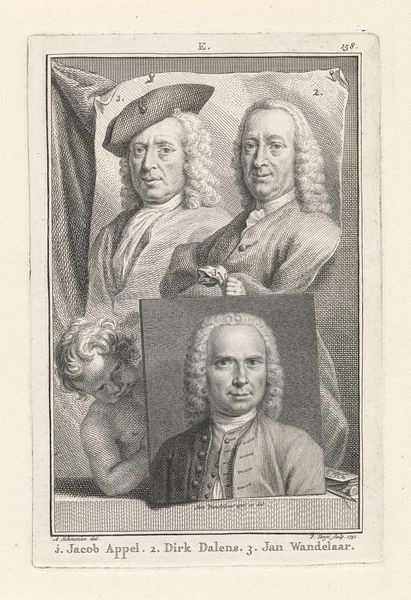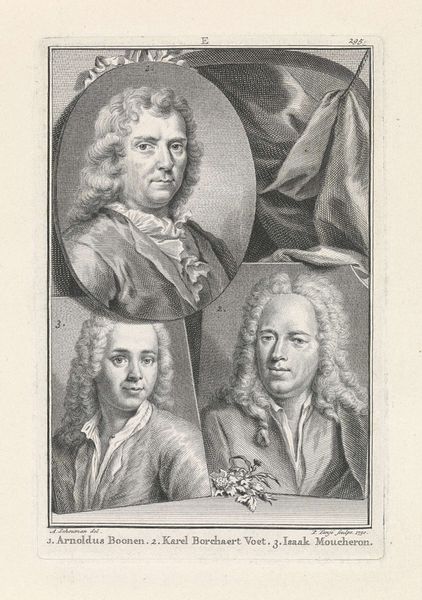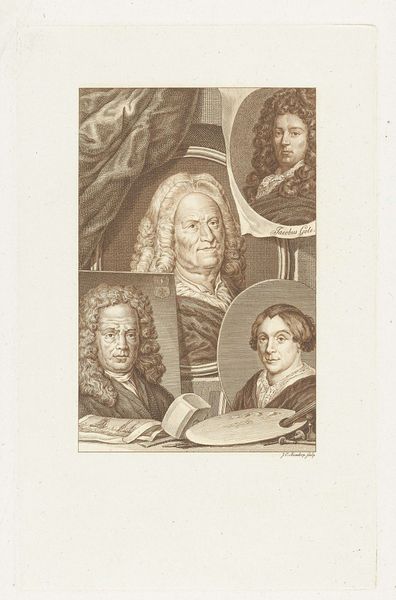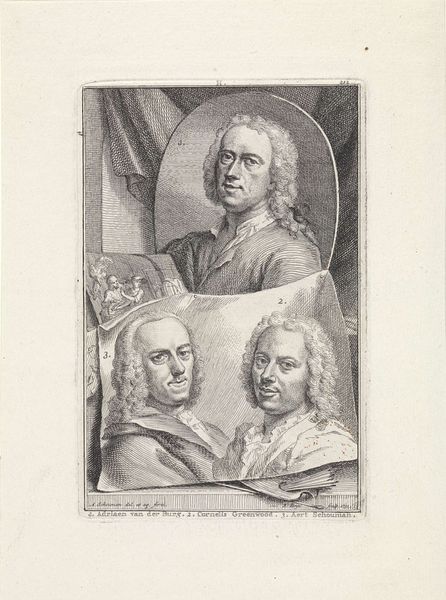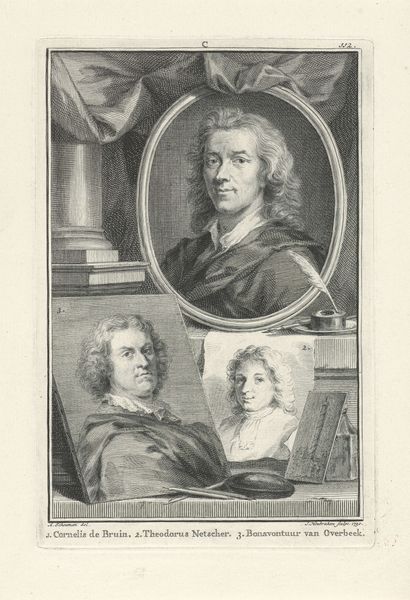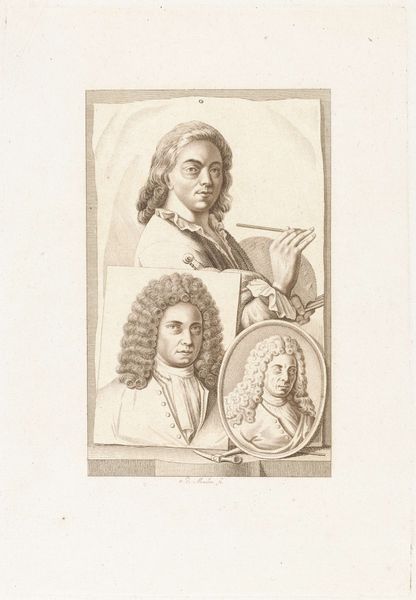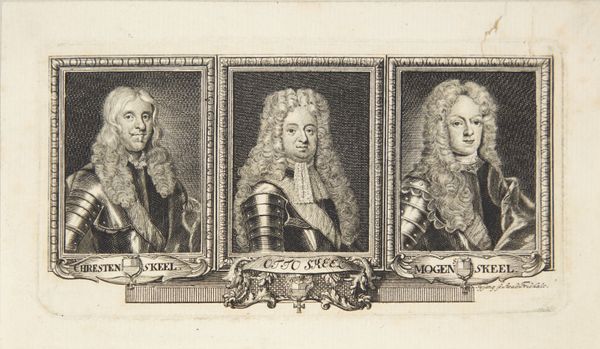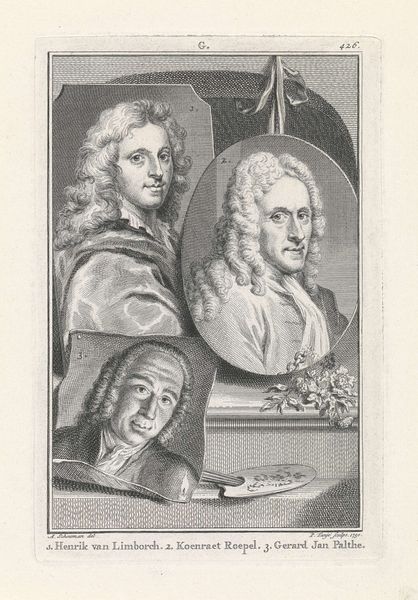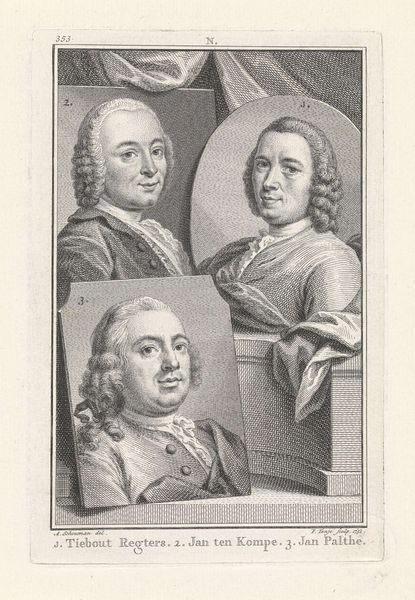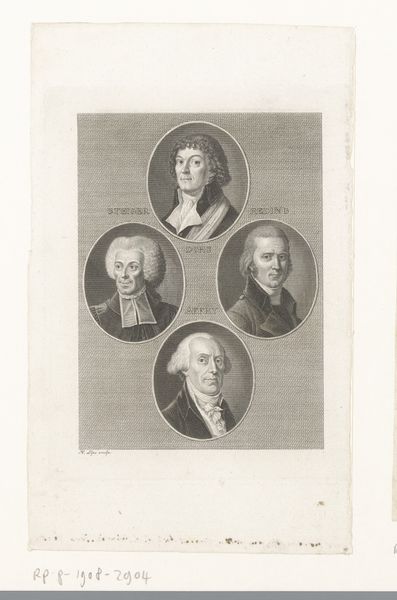
print, engraving
#
portrait
#
baroque
# print
#
history-painting
#
engraving
Dimensions: width 165 mm, height 109 mm, height 225 mm, width 160 mm
Copyright: Rijks Museum: Open Domain
Editor: Here we have "Portraits of Jacob Appel, Dirk Dalens and Jan Wandelaar" by Pieter Tanjé, created around 1751. It’s an engraving, and what immediately strikes me is how it presents multiple portraits within a single print. What's your read on this piece? Curator: For me, it’s about considering the means of production. This print isn’t just an image; it’s a product of labour, skill, and a specific social context. Think about the engraver, Tanjé, his tools, the printing press... how do these material factors shape what we see? Editor: I guess I hadn't thought about the labour involved, just the final product. How does focusing on the means of production change our interpretation? Curator: Well, it moves beyond just aesthetic appreciation. It asks us to consider who had access to such portraits, the social standing of Appel, Dalens, and Wandelaar which allowed them to be immortalised, and the economic system that sustained the printmaking industry itself. What's the role of "high art" and "craft" in 18th-century Netherlands, and does this print blur that line? Editor: So it's about looking at the bigger picture, seeing the print as part of a wider network of materials, labour, and social status. Are the portraits of equal status? The one in the centre is distinct from the others. Curator: Exactly. Notice the way the composition emphasises a hierarchy. Why is one portrait framed differently? Does this highlight differing status or different roles of the depicted people, or is it solely aesthetic? Editor: This definitely gives me a lot to think about in terms of the social and economic factors surrounding the creation of this artwork, more than simply its artistic qualities. Thanks for that insight! Curator: My pleasure. It’s about understanding that art is never created in a vacuum, but within the realities of its production.
Comments
No comments
Be the first to comment and join the conversation on the ultimate creative platform.
